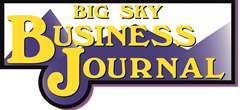Todd O’Hair, President/CEO
Montana Chamber of Commerce
Advancement in technology is rapidly changing the world we live in, the careers we pursue, and undoubtedly affecting nearly every aspect of our lives. Traditional “big iron” companies like John Deere and GM have become “technology companies”.
Electric vehicles, medical devices, military innovation, energy production and storage, are a small sampling of how technology is inextricably woven into our lives. This is the new frontier, with businesses and our nation investing massive sums in advancing technology to reclaim global leadership, improve national competitiveness, and secure our supply chains. There is a direct link to the role of Critical Materials and Minerals and improvements in our lives.
Unlocking our economic potential and protecting our freedoms hinges on our ability to domestically produce more of the metals and materials that are necessary, including copper, platinum, palladium, zinc, and rare earth elements (REEs) like neodymium and praseodymium. These natural resources – the majority of which are abundant in Montana — are vital to technological advancements and our transition to cleaner energy production and delivery.
A full-scale, global transition will require massive leaps in improved technology production. It is impossible without a corresponding investment and extraction of minerals including copper and rare earth minerals. For example, a wind turbine has 4 tons of copper in every turbine. Additionally, on the security front, guided missile systems, submarine sonar and F35 fighter jets require shockingly large quantities of REEs. In fact, the F35 fighter jet requires more than 920 pounds of REEs alone.
The global race to secure these minerals and develop the processes to extract and refine them is on. And the United States is woefully behind and terribly exposed. With 85 percent of processing and 92 percent of magnet production, China dominates the supply chains that transform ore into sensors and powerful magnets, necessary in renewable energy production. According to the Copper Development Association Inc, China, Russia, Iran, and North Korea, now account for approximately half of all non-U.S. global refined copper production. Limited smelter capacity in North America requires sending raw materials into the market and then barging refined products back across the oceans – not good for stabilizing our supply chain or the environment. It’s a fact: we simply do things cleaner in America, and Montana has some of the most stringent environmental standards for mining anywhere on Earth.
Sandfire’s Black Butte Copper near White Sulphur Springs is permitted and is now weaving through the legal juggernaut. Montana Resources in Butte continues to be a significant supplier of copper and molybdenum and has the potential to provide REEs from the Berkeley Pit. The Sheep Creek exploration is examining rare earth elements in the Bitterroot and Sibyane-Stillwater is a leader in the production and processing of palladium and platinum.
The U.S. Federal Government is also recognizing the importance of Montana’s natural resources to our national competitiveness and securing our critical minerals supply chain. Many of the technological advancements needed rely upon smart photonic sensors, where we are global leaders. The U.S. Economic Development Agency validated this with Montana’s recent designation as a regional technology hub under the CHIPs and Science Act.
The indisputable facts are that the supply and demand for critical minerals such as copper and rare earth elements make the Treasure State vital for our country’s energy transition, economic future, and national security. Montana’s past and current copper resources are well known. Our rare earth elements are less known, but worth exploring. Montana is positioned to meet this challenge. As Montanans we should be supportive of our successes and open-minded to the opportunities.


